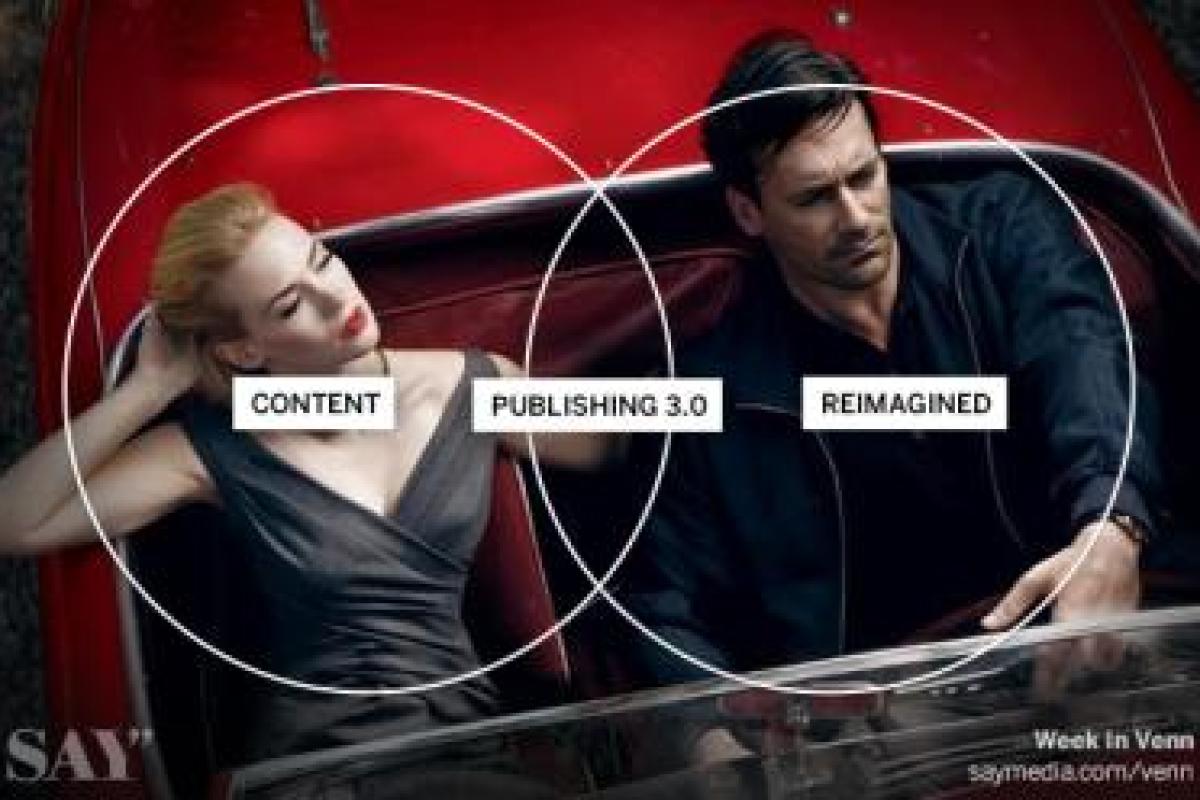'If you don’t like what’s being said, change the conversation.' Don Draper, Mad Men
I’ve spent the past several years of my career helping brands answer one question: "How do we become more like publishers?" pondering what advertisers can learn from content creators who are engaging the very same audiences they’re after. In the ensuing months I’ll be spending time with the editorial side of our business and I thought I might be a bit disruptive by asking: "What if digital publishers thought more like advertisers?"
Here's my initial assessment:
They would live and die by the funnel
Its not just jargon - as a mental framework, the purchase funnel has a way of reshaping the way you think, approach problems and discover opportunities. For publishers it means thinking more intentionally about who is coming in as a casual reader at the top of the funnel and how they’re getting there, strategically moving them through the consideration process to sample more content around the site, and - with any luck - converting them to a loyal reader. Imagine writers being accountable for and measured by the quality (vs. the quantity) of readers they’re attracting. Imagine publishers analyzing the reader journey like marketers analyze the consumer journey - finding key trigger points that forge affinity and acting on them. Imagine an addressable way for editors to identify and move the top 5 percent loyalists to help recruit the rest of their audience army. Most importantly, imagine all of this backed by a data set robust enough to drive decision-making. Which brings me to my next point...
They would get serious about analytics
I mean, this is digital media. We have the great burden... err, opportunity to use data to drive efficiency. The current paradigm focuses mainly on circulation equivalents -uniques and pageviews - there’s a huge opportunity to start slicing up time and engagement data to distill simple, actionable decisions. For editorial teams this would mean leveraging dashboards that connect key performance indicators (things like time spent on article, comments, and social sharing) to salary and incentives to drive competition among writers. For design teams it would mean dynamically adjusting user experience based on referral data (where the reader came from and how they entered). For the CMS it would mean identifying stories on a viral trajectory and flagging them soon enough for authors and social media managers to amplify in those first critical hours of a post’s half-life.
They would obsess about CRM
Digital advertising has become a powerful tool for relationship management. The stakes are even higher in the publishing world as independent creators have built truly intimate publications across the Web - places where readers and writers are friends and democratization of content is practiced openly. CRM, the processes companies use to manage interactions with customers and prospects, is an exhaustive endeavor and a huge challenge through growth stages, but publishers - particularly smaller, independent ones - have an amazing opportunity to differentiate from mainstream media by getting very involved with their communities. And with Google Analytics, Chartbeat, real-time surveys and comments, we are practically handed the keys to understand who’s digesting our content and why.
They would Always Be Testing
If there’s one thing we can learn from advertisers it's that testing must be always-on and completely frictionless. With advances in publishing platforms there’s an opportunity to make testing truly programmatic and a fluid part of the editorial process. Whether it's A/B testing headlines or version testing page layouts, the more publications can push their publishing platforms to do this autonomously, the more they arm our writers to succeed.
They would embrace advertising, warmly
For years advertisers have been asked to respect and preserve content as a prerequisite for co-existence. Well, quid-pro-quo publishers – it's time to do the same for advertising. The most successful online publishers that are effectively monetizing while maintaining credibility and transparency, publications like Vice, The Awl, Gear Patrol and Quartz, embrace advertising as they do content. Native advertising is less about advertisers assimilating their message to endemic formats and more about the platforms and publications helping brands find a place in their world.
So let’s put this into practice, presuming my content was snackable enough to meet your dietary restrictions - you’ve made it this far. More importantly, you’re about to make a decision critical to my business: will you progress down the reader funnel, or abandon it?
Read more from Say Media.
What if publishers thought like advertisers?
What if publishers thought like advertisers?
